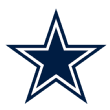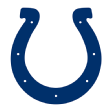The Cleveland Browns have pockets full of draft picks heading into the 2017 NFL draft. Thanks to multiple trades and compensatory selections, Cleveland has racked up 96.7 points in draft capital, according to Chase Stuart's draft chart, while the average team has just 44.8 points.
Good! Teams coming off 1-15 seasons need a lot of draft picks to return to contention, and Hue Jackson's team could use help just about everywhere heading into 2017. The Browns are unquestionably emulating successful rebuilds from the past, but where does their draft capital rank historically? And how often do teams who have amassed draft hauls actually turn those assets into superstars and Hall of Famers?
Well, let's find out. I went back and applied Stuart's draft model to every class going back through the AFL-NFL merger of 1970 to get a sense of where the Browns sit ahead of the 2017 draft. I'm going to run through the most bloated classes during the time frame, splitting them up into a classic era and a modern one more comparable to what the Browns currently occupy.
One important note to keep in mind: This is a look at the most valuable classes by draft capital, not by actual performance.

The Classics
Let's start with the older era, back when the draft ran 17 rounds and well more than 400 picks. Teams were much less protective of their choices back then, and there were simply far more players (and picks) to go around, so it's comparing apples and oranges to contrast draft classes from back then to the modern era. Both the Stuart chart and the Jimmy Johnson chart assign every pick after 224 zero value, which also complicates matters.
The draft moved to something resembling its modern format in 1993, cutting back from 336 picks to 224 selections. That will be where we start the modern era. Here, let's look at the five largest draft classes by capital from 1970-1992:

5. 1985 Buffalo Bills
16 players, 113.9 points
The 1984 Bills weren't as bad as the 2016 Browns, but they were close. Buffalo went 2-14 while being outscored by 204 points; this year's Cleveland team went 1-15 while being outscored by 188 points. Like the Browns, the Bills had two first-round picks in the 1985 draft, including the first overall selection. Ironically enough, Buffalo netted an extra pick in 1985 by trading their first pick in the supplemental draft to ... the Browns, who drafted Bernie Kosar. And as Cleveland is expected to do in the 2017 draft, the Bills used the first overall pick on an edge rusher. The guy they chose turned out well: Bruce Smith racked up 200 career sacks en route to the Hall of Fame. (Don't feel bad for the Bills, as another trade they made with the Browns would eventually net Buffalo its own quarterback, Jim Kelly.)
The Bills traded down during the draft, sending the seventh overall pick to the Packers in a deal that ensured they would have two picks in each of the first four rounds of the draft. Their two top picks after Smith were Derrick Burroughs and Mark Traynowicz, who failed to impress, but they found longtime backup Frank Reich in the third round before drafting wideout Andre Reed in the fourth round. Two Hall of Famers in one draft class is as good as it gets, and while it took some time, the Bills were in the playoffs by 1988.

4. 1975 Los Angeles Rams
21 players, 114.2 points
The Rams were annual contenders under Chuck Knox, and in 1975, they were in the middle of a six-year stretch of seasons with 10 wins or more, which is even more impressive when you consider that five of those seasons came before the NFL moved from 14-game seasons to the current 16-game campaign. They had also extracted an enormous haul of picks from the Packers for veteran quarterback John Hadl, who was dealt during the 1974 season for Green Bay's first- and second-round picks in 1975 and 1976, as well as a 1975 third-rounder. The 35-year-old Hadl would throw 21 picks in his first full season with Green Bay and was off the roster by 1976. The Rams had a third first-round pick from the Eagles after dealing them another veteran quarterback, Roman Gabriel, after the 1972 season.
In all, Los Angeles had four of the first 28 picks and eight of the first 98 selections. Their draft produced five Pro Bowlers, most notably guard Dennis Harrah (who made six trips to Hawaii) and quarterback Pat Haden, who stuck around in Los Angeles and eventually became the athletic director at USC. The current Rams would love to have this sort of draft capital, let alone multiple veteran quarterbacks worth trading away.

3. 1979 Buffalo Bills
15 picks, 115.7 points
The Bills made one of the better trades in league history to acquire the first overall pick in this draft, sending a washed-up O.J. Simpson to the 49ers after the 1977 season for five selections, including San Francisco's 1979 first-round pick. The 49ers went 2-14 during each of Simpson's two years with the team, handing the Bills the first overall pick in 1979, which was Bill Walsh's first year as head coach and Simpson's final year of professional football. Buffalo also had the fifth overall pick and an extra second-rounder via trade from the Broncos.
I would say things went south for the Bills, but they actually went north. First overall pick Tom Cousineau passed up the Bills to go play with the Montreal Alouettes of the CFL; by the time he returned in 1982, Buffalo sent him to Cleveland as part of the aforementioned deal, which netted the Bills Jim Kelly, although Kelly didn't make it to the NFL until 1986. That pick swap eventually ended well for the Bills, but they had to wait seven years for any tangible on-field return.
Otherwise, Buffalo's draft was mostly disappointing. Jerry Butler, the team's fifth overall pick, made one Pro Bowl but never broke out into stardom. Second-rounder Jim Haslett made more of a name for himself as a coach, while the one Bills pick to enjoy a notable career in Buffalo was defensive tackle Fred Smerlas.

2. 1982 New England Patriots
17 picks, 118.6 points
Three years later, despite missing that first overall pick from 1979, the 49ers were Super Bowl champions. They figured heavily in this draft class, with the 49ers sending the Patriots their first-round pick, a pair of second-round picks and a fourth-rounder as part of two trades for retired tight end Russ Francis and a move up for offensive lineman Bubba Paris. The 2-14 Patriots, who underperformed their Pythagorean Expectation by what is still a record high of 4.7 wins, also held the worst record in football and the first overall selection.
The Patriots made a hash out of most of their haul, as they came away with only three long-term starters from this draft class. One of them was first overall pick Kenneth Sims, who failed to turn into an upper-echelon pass rusher and never recorded more than 5.5 sacks in a single season. Fellow first-rounder Lester Williams started only as a rookie, while second-rounders Robert Weathers and Darryl Haley were anonymous. Their other second-rounder, though, was linebacker Andre Tippett. The Iowa product was overshadowed by contemporary Lawrence Taylor, but he sacked opposing quarterbacks 100 times and made the Hall of Fame. No draft -- not even one with the second-most capital in league history -- can be a disappointment if it produces a Hall of Famer.

1. 1991 Dallas Cowboys
18 picks, 132.2 points
As much as some traditionalists like to pretend that the Browns are heretics for acquiring as many draft picks as possible, they've got nothing on Jimmy Johnson and the Cowboys. Johnson's first team, the 1989 Cowboys, are 13th on this list with 97.7 points of capital. The 1990 Cowboys are way down on the list, but only because they forfeited the first overall pick in the draft to use the first pick in the 1989 supplemental draft on quarterback Steve Walsh. They still managed to use their other first-round pick, one of the many selections acquired in the Herschel Walker swap, on Emmitt Smith.
The Cowboys were already on the right track -- they had jumped from 1-15 to 7-9 before the 1991 season, when they would return to the playoffs with an 11-5 campaign -- but they had more draft picks than roster spots, and so they traded two picks and three players to the Patriots to move up in the draft in the hopes of grabbing star Notre Dame wideout Raghib "Rocket" Ismail. Ismail turned down Dallas' offer and went to the CFL to play with the Toronto Argonauts before joining the Raiders in 1993.
Dallas instead used the first pick on Russell Maryland and found the speedy wideout they wanted with Alvin Harper at 12. They traded down twice with their other first-rounder, eventually drafting Kelvin Pritchett at 20. By the time they were done, the Cowboys had seven of the top 70 picks and 11 of the first 110 selections. Maryland and Harper were useful players, but the best player the Cowboys selected was 70th overall pick Erik Williams, who settled in as a star right tackle. They also used late picks on notable contributors such as Leon Lett (the 173rd pick) and future Super Bowl MVP Larry Brown, who immediately stepped in as a starter at cornerback despite being selected with the 320th pick of the draft.

The Modern Class
Here, let's run through the five organizations who had the most capital to work with in a given draft between 1993 and 2016. I'm going to leave out a few teams -- the 1995 Jaguars, the 1999 Browns and the 2002 Texans -- who were making their first selections after entering the league as expansion teams, so they aren't really comparable for the purposes of this piece.

5. 2000 Cleveland Browns
13 picks, 82.2 points
Even leaving out the new Browns' first draft, their second draft just narrowly pips the 2009 Lions (who drafted Matthew Stafford and DeAndre Levy) and 2008 Falcons (who picked Matt Ryan and Curtis Lofton) for the fifth spot on this list. The Browns were given a handout by the league, as they were awarded picks in the middle of the third, fourth, fifth, sixth and seventh rounds in addition to their own selections.
The 2000 Browns had the first overall pick for the second consecutive season after a 2-14 debut campaign. They did virtually nothing with their treasure trove of assets. First overall pick Courtney Brown never developed into a useful pass rusher and was out of football by 2006. Mid-round picks such as Travis Prentice and JaJuan Dawson were anonymous and failed to make it to the end of their rookie contracts. Cleveland's most successful pick was Dennis Northcutt, who had a 10-year career as a backup receiver and return man. Not one of their picks made a single trip to the Pro Bowl. This is the worst-case scenario for the current Browns.

4. 2007 Oakland Raiders
11 picks, 84.3 points
Unless this is the worst-case scenario for the Browns. Without the benefit of those compensatory picks from the league, the Raiders got by with extra picks via trades, including three third-round picks and two fourth-round picks. The most famous selection they made was JaMarcus Russell, who was a colossal bust as the first overall pick, but they might have made an even worse call in trading Randy Moss to the Patriots for a fourth-round pick. Moss scored 23 touchdowns during his first season with the Pats, while defensive back John Bowie played five games over two seasons with Oakland. The only bright note is tight end Zach Miller, whom the Raiders drafted in the second round. Miller made it to a Pro Bowl during his fourth and final season with Oakland, the only player from this class to do so.

3. 1994 Indianapolis Colts
Eight picks, 86.3 points
This was a top-heavy draft, as the Colts traded former first overall pick Jeff George back to the Falcons (with whom they had originally traded up to grab George) for the seventh and 83rd selections, as well as a conditional pick in the 1996 draft, which ended up turning into Marvin Harrison. Indy packaged those two picks to San Francisco to move up and grab Trev Alberts, while the 49ers sat back and grabbed the far more productive Bryant Young. The lesson: Trading up is bad.
The Colts had no extra picks after making the Alberts trade, but with the second-worst record in football, they had high picks in each round. The only one of their picks who amounted to much in the NFL was the second overall selection, but he was Marshall Faulk. Under the Hall of Famer rule, this was a good draft.

2. 2008 Kansas City Chiefs
12 picks, 86.6 points
The Chiefs had several extra picks heading into this draft by virtue of trading away Jared Allen, Trent Green, Michael Bennett and Lawrence Tynes. Allen was responsible for the biggest return, as the Chiefs sent him to the Vikings while swapping sixth-round picks but receiving a first-round chit and a pair of third-round selections.
Kansas City's first pick was a disappointment, as fifth overall selection Glenn Dorsey never really turned into the sort of interior disrupter the Chiefs envisioned. Carl Peterson made up for it afterward during what was his final draft in charge of the organization. He used several picks from the Allen trade to move up two slots in the first round and select left tackle Branden Albert. Their next pick (No. 35 overall) was longtime corner Brandon Flowers, who would be joined by fellow standout cornerback Brandon Carr with the 140th pick.
The Allen trade would also deliver a franchise icon when the Chiefs used one of their third-round picks on Jamaal Charles, although subsequent third-rounders Brad Cottam and DaJuan Morgan never emerged as starters. None of the players in this group will make the Hall of Fame, but they've combined to make seven Pro Bowls. That would be a totally reasonable haul for Cleveland.

1. 1993 New England Patriots
10 picks, 88.4 points
Bill Parcells's first draft with the Patriots started with a wise decision, as the Patriots chose to draft Drew Bledsoe over Rick Mirer, who ended up struggling with the Seahawks. Bledsoe was New England's only first-rounder, but he was the top selection in the draft and he was followed by three second-rounders. (One of those was actually a third-round pick that turned into the final pick of the second round after the Raiders couldn't deliver their selection on time.)
Those second-rounders became Chris Slade, Todd Rucci and Vincent Brisby, who each became starters for New England. Patriots fans remember Bledsoe fondly after he gave way to Tom Brady, and Parcells saved another fan favorite for his final pick: Troy Brown at No. 198 overall. Brown didn't become a regular starter until his eighth season in the league (2000), but he would finish his career with 15 seasons, 192 games and three championship rings with the Pats.

What does it mean for the 2017 Browns?
With 96.7 points, the Browns have more draft capital than those Patriots by a comfortable margin for now. I'm skeptical they will hold on to all of the assets they currently have in light of the offers they will likely get during the draft. Cleveland repeatedly traded current picks for future selections last year, and while they need to add talent to their roster, the Browns can still afford to take a couple of their picks and create premium picks in 2018 and beyond. Even if they just trade the 52nd pick away for a future selection or a player, that would be enough to push the Browns behind these Patriots.
As for this exercise, we saw that there are no guarantees. Even a huge cache of draft picks can fail to deliver stars, as the 2000 Browns and 2007 Raiders showed. The Browns know this. All the draft capital they've acquired is for naught if they can't draft and develop talent, but that same draft capital gives them the best shot at finding talent Hue Jackson can mold into useful contributors. They're on the clock and won't be coming off of it very frequently on draft weekend for years to come.
